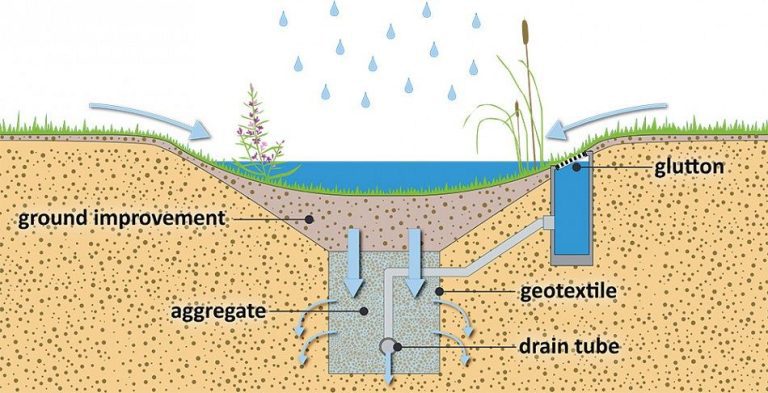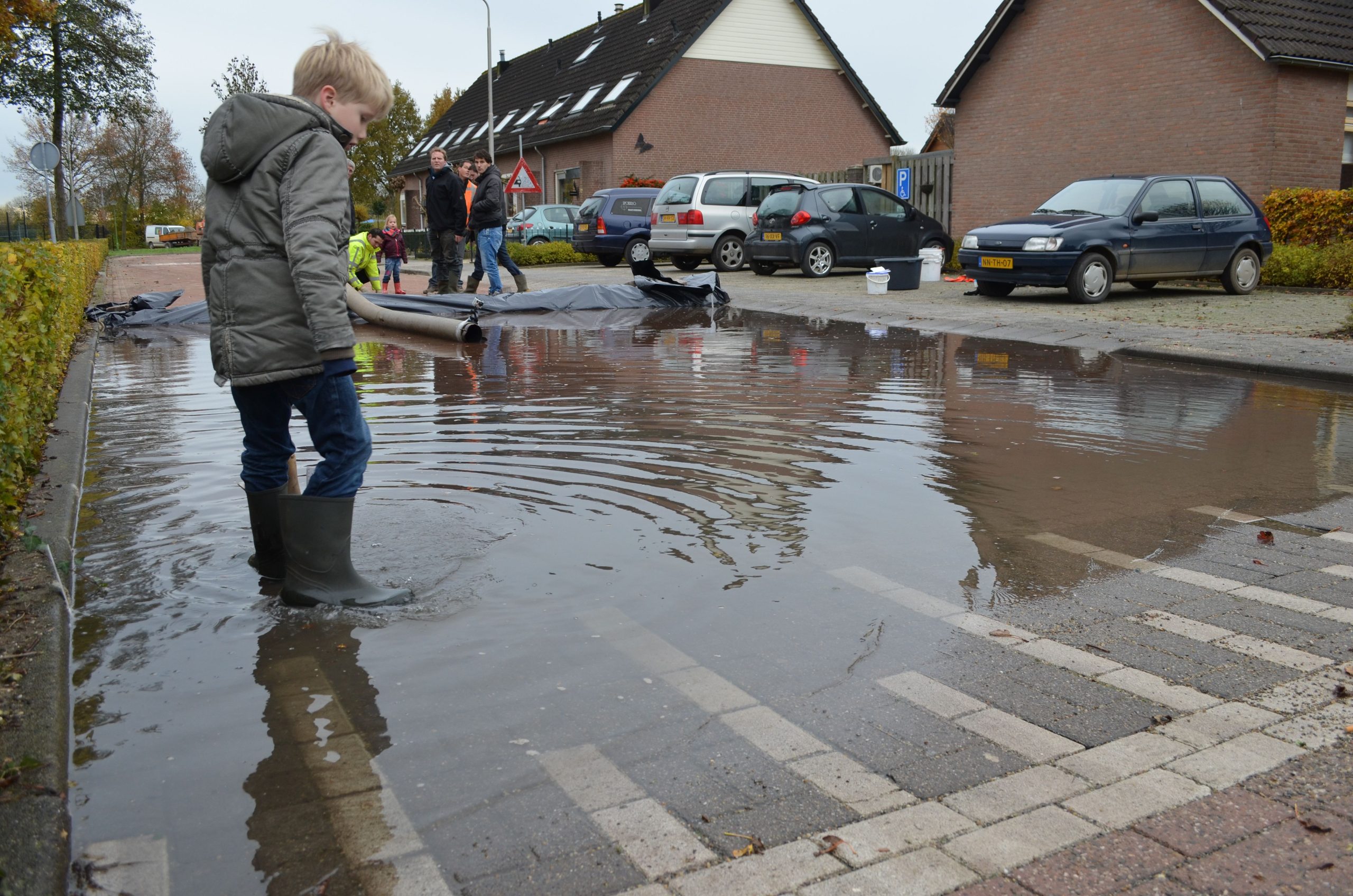As extreme rainfalls are becoming more frequent, green gutters and permeable pavements that allow water to infiltrate, help prevent flooding.
Dr Floris Boogaard’s PhD thesis on sustainable urban drainage systems (SUDS) was well timed. The largest summer storm on record had just passed over the Netherlands, leaving many flooded streets in its wake. Insurance companies, themselves flooded with numerous claims, urged municipalities to take measures against extreme rain storms. Without such measures, they would need to adjust their rates accordingly, they said.
“Low lying green and porous pavements can absorb the excess of water thus alleviating the load on the drainage systems”, explains Dr Floris Boogaard. He did his PhD at the Faculty of Civil Engineering and Geosciences. He measured and monitored the performance of the two most common green water infiltrators: permeable pavements and retention swales (broad, shallow gullies).
Counter to the common belief that such water-absorbing structures only work with porous soils and low groundwater levels, he showed that they can be applied all over the Netherlands with a maximum absorption time of 48 hours.
Boogaard discovered that the usual method of measuring the infiltration capacity of permeable pavements is unreliable. The test consists of placing a ring-shaped reservoir on the pavement, filling in with water and measuring the time it takes to drain. Repeated measurements on different places on the same pavement produce draining rates (in millimetre per hour) that vary a hundredfold or more.
 Field test
Field testField test
So, Boogaard opted for a full-scale test instead. With sandbags and plastic sheets, he created a basin in the street and filled it with water from a tank truck or a nearby ditch. Auto-logging pressure sensors registered the water level going down.
Measurements of eight permeable pavements showed a tendency to clog up after about four years. Consequently, the infiltration capacity drops below the EU standard of 200 mm/hour. The good news is that street sweeping and vacuum cleaning removes the fine particles responsible for the clogging and restores the infiltration.
 Green gutters
Green guttersGreen gutters
Retention swales are a relatively new feature in the Netherlands. First introduced in Enschede in 1998, they have now spread all over the country. After a rain storm, the swale fills with water that slowly infiltrates into the ground. If the water level gets too high, it will overflow into a drain tube.
 Vegetation
VegetationVegetation
Measurements of 12 swales all over the Netherlands show a large variation in infiltrations rates between 8 and 25 centimetres per day (and an outlier of 216 cm/day in Arnhem). There is even a threefold variation in the performance of swales that were very close together.
Boogaard explained that most of the variation per location originates in the vegetation. A variety of plants with different root depths results in the best permeability.
Based on his measurements and his field experience since his graduation in 1998, Boogaard postulates that water-absorbing measures can be applied in any city. So whenever and wherever municipalities undertake a redevelopment, they can climate-proof their city by installing water-absorbing structures.
Moreover, he proved the feasibility of greening the gutters with a project in Betondorp (‘Cement City’), a neighbourhood of low-lying Amsterdam. He and his team at Tauw Consultancy were rewarded the Peilstok 2014 together with Rainproof Amsterdam.
–> Floris Boogaard, Stormwater characteristics and new testing methods for certain urban drainage systems in the Netherlands, July 8, 2015, PhD Thesis Supervisors: Prof. Nick van de Giesen and Dr Frans van der Ven (CEGS)
An overview of porous pavements and green gutters can be found as brown dots on the map of climatescan.



Comments are closed.